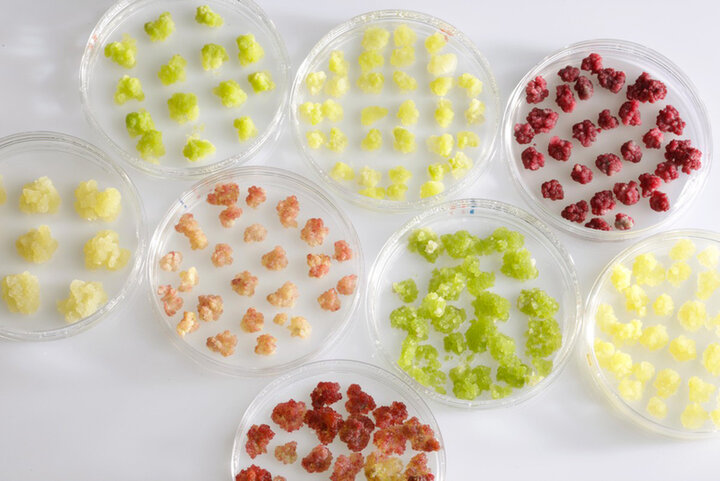Regulation
— Column
Novel Food: a journey through the legislation
KEYWORDS
Food safety
Food regulation
Food ingredients
European Food Safety Authority
ADME
Toxicology
EU Transparency Regulation
The food industry is constantly evolving, with new products and ingredients emerging because of technological advancements and innovative research. To ensure the safety and proper labelling of these novel foods, the European Union (EU) has established a comprehensive framework of regulation and guidance; these rules are crucial in maintaining public health, supporting innovation, and ensuring consumer confidence in new food products entering the market.
Introduction
The Novel Food Regulation (Regulation (EU) No. 2015/2283) came into force on January 1, 2018, replacing the earlier regulation from 1997 (Reg. No 258/97). It defines a Novel Food as a food that has not been consumed to a significant degree by humans in the European Union before 15 May 1997, when the first Regulation came into force (1).
Examples of Novel Food include new sources of vitamin K (menaquinone) or extracts from existing food (Antarctic Krill oil rich in phospholipids from Euphausia superba), agricultural products from third countries (chia seeds, noni fruit juice), or food derived from new production processes (UV-treated food (milk, bread, mushrooms and yeast).
Under this Regulation, novel foods are classified into several categories, according to the source and the manufacturing process they are produced from. Some categories are ingredients derived from new production process (and resulting with a new compositional profile), engineered nanomaterials, traditional foods from non-EU countries and food consisting of (or isolated from or produced from) microorganisms, fungi, algae, animals, and plants.
The European Food Safety Authority (EFSA) is the scientific body in charge of evaluating the safety of novel food. Several are the requirements requested by EFSA that a novel food's manufacturer should met in order to provide a comprehensive and detailed application. An extensive set of Guidance is published by the same EFSA in order to help Applicant in the procedure and the building of their dossier (2).
As first thing, EFSA asks applicants to deeply characterize the novel food, from its production up to its structural composition. According to the source of the novel food, the requirements may widely vary. For example, novel food produced from microorganism should include a full characterization of the production strain through providing its Whole Genome Sequencing (WGS), proof of the absence of the microorganism viable cells and DNA in the finished product and deposition of the production strain in a Culture Deposit recognized under the Budapest Treaty (3).
Comprehensive data on the novel food's composition are required, as well. This refers to quali-quantitative information on the novel food constituents (e.g., macronutrients, micronutrients, by-products, heavy metals, microbiological parameters) and description of the physical and chemical properties, including solubility and stability. Generally, the EFSA requires that these data are derived from 5 batches of the novel food independently produced.

Thus, EFSA reaches a conclusion (scientific opinion) that is published, even if it is negative, on EFSA's website (EFSA opinions are all publicly available). Based on EFSA's opinion, the European Commission prepares a draft implementing act that proposes the authorization or rejection of the novel food (6). Only following this path and getting a positive opinion from EFSA, the novel food can be included in the Union list of Novel Food (7) and placed on the market of the entire European Union.
The European Union (EC) shares the same principles with the United States regarding consumer protection and safety. A pre-market approval for foodstuff is foreseen by both regulatory authorities (i.e., EC and FDA). However, the US regulatory framework sees different paths for placing new foods or ingredients on the market, and there is no straightforward definition for "novel" foods.
According to the Federal Food, Drug and Cosmetic Act (FD&C Act) (8), any substance intentionally added to the food market must be one of the following: 1) an approved food additive; 2) an approved color additive; 3) a substance that is generally recognized as safe (GRAS), 4) fall into another category exempt under section 201(s) of the FD&C Act.
Obtaining the GRAS status is the quicker way to enter the US food market. Still, it must meet the following two requirements: a) the substance(s) must be concluded to be safe for its intended use based on scientific evidence or consolidated significant consumption b) these data and information must be generally available, accepted publicly and reflect the consensus of the scientific opinion.
An expert panel can reach the GRAS conclusion on behalf of the Food Business Operator (FBO), which evaluates the substance(s) for its intended use. The FBO may submit a GRAS Notice into the voluntary GRAS Notification Program where the Food and Drug Administration (FDA) evaluates the GRAS conclusion and releases an opinion.
Because it is a voluntary program, the FBO is not legally required to notify the FDA of its GRAS conclusion. However, it is required that companies do the same work documenting their independent GRAS conclusion as they would if submitting a GRAS notice to the FDA, according to the GRAS Final Rule (9) and the 21 CFR Part 170 Subpart E (10).
Food additive approval must meet the exact requirements of the GRAS. However, the procedure involved the FDA from the beginning, and it can be based on non-public data (i.e., data entirely generated by the Applicant and covered by confidentiality). The procedure falls under the name "Food Additive Petition Submission".
Last but not least, if the new ingredient is intended as a new dietary ingredient (i.e., for food supplement use) and it has never been used as such in history, the Applicant must follow the New Dietary Ingredient (NDI) Notification Process (11) which requires an extensive data generation to prove the safety of the substance(s).

Parents understand that the maintenance of their child’s health and wellness is their responsibility; however, many parents face various challenges when trying to do so. FMCG Gurus findings highlight that sugar is the ingredient that parents are most conscious about in food and drink products, with 74% of consumers concerned by sugar content in products. As children are typically drawn to sugary indulgences, parents are concerned by the link between obesity and diabetes and the hidden sugars in products.
Many parents believe that the complex labeling used by brands disguises ingredients. As a result, brands should ensure that nutritional labeling is made clear and simple for parents so that they are able to unpick the nutritional profile of products within seconds.
References and notes
- Regulation (EU) 2015/2283 of the European Parliament and of the Council of 25 November 2015 on novel foods, amending Regulation (EU) No 1169/2011 of the European Parliament and of the Council and repealing Regulation (EC) No 258/97 of the European Parliament and of the Council and Commission Regulation (EC) No 1852/2001. Available from: EUR-Lex - 02015R2283-20210327 - EN - EUR-Lex (europa.eu)
- Guidance on the preparation and submission of an application for authorization of a novel food in the context of Regulation (EU) 2015/2283 (Revision 1). EFSA Journal 2021; 19(3):6555, 27 pp. Available from: Guidance on the preparation and submission of an application for authorisation of a novel food in the context of Regulation (EU) 2015/2283 (Revision 1) | EFSA (europa.eu)
- Guidance on the characterization of microorganisms used as feed additives or as production organisms. EFSA Journal 2018;16(3):5206, 24 pp. Available from: Guidance on the characterisation of microorganisms used as feed additives or as production organisms | EFSA (europa.eu)
- Regulation (EU) 2019/1381 of the European Parliament and of the Council of 20 June 2019 on the transparency and sustainability of the EU risk assessment in the food chain and amending Regulations (EC) No 178/2002, (EC) No 1829/2003, (EC) No 1831/2003, (EC) No 2065/2003, (EC) No 1935/2004, (EC) No 1331/2008, (EC) No 1107/2009, (EU) 2015/2283 and Directive 2001/18/EC. Available from: Regulation - 2019/1381 - EN - EUR-Lex (europa.eu)
- Question and Answer on EFSA Practical Arrangements. Available from: Questions and Answers on EFSA Practical Arrangements | EFSA (europa.eu)
- Administrative guidance for the preparation of applications on novel foods pursuant to Article 10 of Regulation (EU) 2015/2283. EFSA supporting publication 2021: 18(3): EN-6488. 31 pp. Available from: Administrative guidance for the preparation of applications on novel foods pursuant to Article 10 of Regulation (EU) 2015/2283 | EFSA (europa.eu)
- Commission Implementing Regulation (EU) 2017/2470 of 20 December 2017 establishing the Union list of novel foods in accordance with Regulation (EU) 2015/2283 of the European Parliament and of the Council on novel foods. Available from: https://eur-lex.europa.eu/eli/reg_impl/2017/2470/oj
- Federal Food, Drug, and Cosmetic Act (FD&C Act) Available from: https://www.fda.gov/regulatory-information/laws-enforced-fda/federal-food-drug-and-cosmetic-act-fdc-act
- GRAS Final Rule. FDA (2016). Available from: https://www.federalregister.gov/articles/2016/08/17/2016-19164/substances-generally-recognized-as-safe
- CFR Part 170 Subpart E (update 2024). FDA. Available from: https://www.accessdata.fda.gov/scripts/cdrh/cfdocs/cfcfr/CFRSearch.cfm?CFRPart=170&showFR=1&subpartNode=21:3.0.1.1.1.5
- New Dietary Ingredient Notification Process. FDA. Available from: https://www.fda.gov/food/dietary-supplements/new-dietary-ingredient-ndi-notification-process



